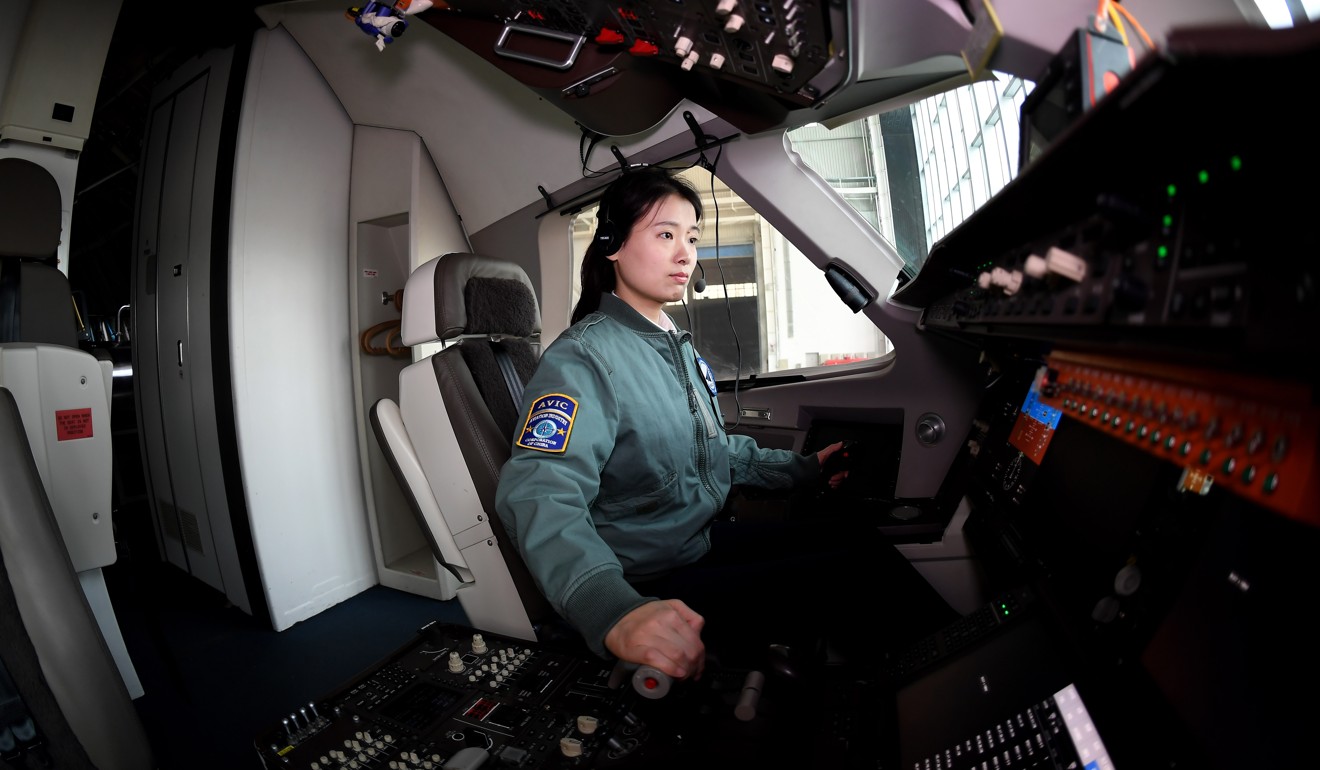
Boeing’s woes fuel Washington’s fears of the age of the made-in-China plane
- The worldwide grounding of the 737 MAX 8 jet is giving the US a chance to fixate on another Chinese sector: aviation. To trade hawks, China’s C919 project is a sore reminder of the way Beijing is using state subsidies, and US tech, to compete
The C919 was clearly conceived as a contender to break the duopoly of Airbus and Boeing in commercial aviation, and has been developed with the help of generous, imprecisely understood state subsidies.
In China’s bid to play catch-up in aviation, the C919 is the project of a plethora of joint ventures with – and technology transfers from – US aerospace companies. With a capacity of about 170, the jet is intended as a workhorse of the huge short-haul aviation market, and as a direct competitor to the Airbus A320neo and the Boeing 737 MAX 8.
So the MAX 8 crisis could hardly have come at a better time for the C919. But it could hardly have come at a worse time with regard to the trade war, adding fuel to Washington’s complaints about Beijing’s industrial policy and allegations of a wide range of unfair trade practices.
The US’ Sinophobes protest that the C919 project is a glaring example of the unfair way in which China is increasing its economic heft at the expense of some of the US’ most successful and sophisticated manufacturers.
Others with less paranoid leanings see it as an example of international technology cooperation, a potentially useful hedge in the long term against the global duopoly of Boeing and Airbus, and a demonstration of how dependent China’s hi-tech manufacturers are on foreign technology leaders.
It also demonstrates how long it is likely to take for the huge technology gap to be narrowed.
The tragic Ethiopian Airlines and Lion Air crashes have drawn attention to the ubiquity of Airbus’ A320 and Boeing’s 737 series – the MAX 8 is one of four new variants of the 737 – in the global aviation market.
Launched just two years ago, the MAX 8 meets the booming global demand for medium-sized, short-haul aircraft, which account for over 70 per cent of the air miles flown worldwide.
Of the 806 aircraft delivered by Boeing last year (neck and neck with Airbus) 580 were 737s, and most of these were MAXs.
Beijing has for decades chafed under the global Boeing-Airbus duopoly, and harboured hopes of developing a credible home-grown competitor.
As of the end of 2017, with 3,273 commercial aircraft plying China’s skies, 1,558 of them are Boeings and 1,533, Airbuses (and most of the remainder are small jets built by the likes of Embraer and Bombardier).
This is why in 2008 Beijing established Comac with the specific aim of developing the C919. Subsidies were lavished on the new start-up.
A team from the Rand Corporation estimated that Comac had initial resources of more than US$7 billion, including capital and loans from the likes of the State-owned Assets Supervision and Administration Commission, the Shanghai municipal government’s Guosheng Investments, the Aluminium Corporation of China, Baosteel and Sinochem.
In justification, officials no doubt recalled the billions injected by a number of European governments into the establishment of Airbus outside Toulouse, as a competitor to the US monopoly in commercial aviation.
They would have recalled the US$13 billion required over a decade to develop the A380. As the Rand team notes: “Designing and developing a new commercial jet is an especially difficult challenge for a company like [Comac] that has not previously designed and built a new aircraft and has no existing models to generate revenues and profits to sustain the company while the costs of developing a new plane are incurred.”
Unveiled as a concept in 2009, the C919 was intended for a commercial launch in 2019. Fierce technological challenges have pushed the date to 2021.
Even then, half the components of the aircraft are from international suppliers – predominantly from the US. For example, Honeywell Aerospace supplies flight control systems, wheels and brakes, auxiliary power units and navigation equipment.
The engines are from CFM International, a joint venture between the US’ GE and France’s Safran. Much work is being done by Sino-foreign joint ventures based in China.
While Boeing has few complaints about the emergence of the C919 as a competitor (indeed, it has bought parts from China since the 1970s and reportedly trained more than 37,000 Chinese aviation professionals), the current trade tensions over technology theft make it unlikely that the present US administration will be similarly sanguine.

Note the tone of comments by the likes of anti-China analyst Alan Tonelson: “Since the C919 is built by China’s state-run and subsidised aviation industry, it’s sure to be able to offer heavily discounted prices to customers outside China.
“… The inevitable result: limited opportunities in China for Boeing and other foreign competitors, and major worldwide economies of scale for Chinese aerospace producers.
“Most important, Beijing has already made clear its ultimate goal of ridding China’s skies of non-Chinese aviation companies.”
Boeing does not share this anxiety. It projects a demand for more than 42,000 new planes between now and 2037, and expects China to buy more than 7,000 of them.
In this context, the unproven C919, with 815 orders from 28 customers (who are mainly compliant Chinese state-backed airlines), is an unlikely challenger for decades to come.
But this will not stop the US from fixating on unfair Chinese trade practices, particularly in the light of the current Boeing crisis and 737 MAX 8 tragedies.
David Dodwell researches and writes about global, regional and Hong Kong challenges from a Hong Kong point of view

